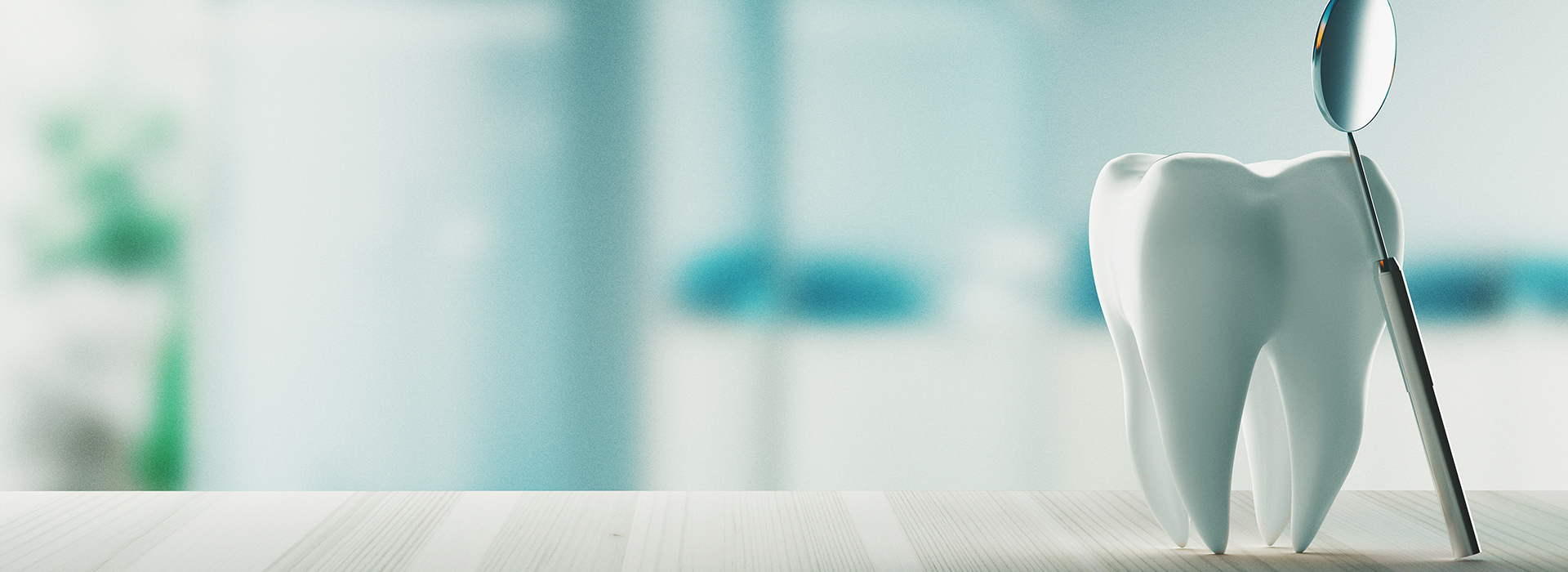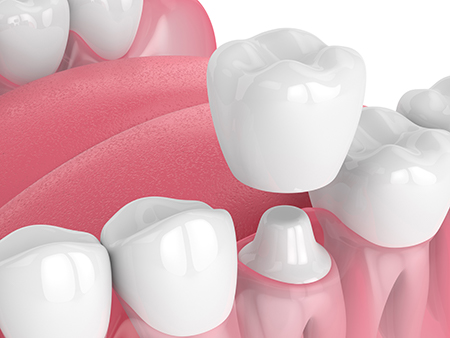

At the office of Liberty Dental Care PC by Park One Dental, we combine modern techniques with an emphasis on predictable, natural-looking results. Our goal is to restore teeth so they function comfortably and blend seamlessly with the rest of your smile. Cosmetic crowns are one of the most versatile tools we use to achieve those outcomes.
Whether a tooth is weakened by decay, fractured from an injury, worn down by grinding, or simply discolored and out of proportion with surrounding teeth, a well-made crown can protect, strengthen, and enhance its appearance. Recent advances in ceramic materials and digital workflows make it possible to deliver restorations that are both durable and highly aesthetic.
Every treatment at our practice starts with careful evaluation. We consider bite forces, gum health, the color and translucency of nearby teeth, and your cosmetic goals to recommend a solution that balances longevity with a natural appearance. This page explains why crowns are recommended, what makes ceramic crowns special, how materials differ, what to expect during treatment, and why our team is a good choice for cosmetic crown care.
A crown (sometimes called a cap) is a full-coverage restoration that encases the visible portion of a tooth. Unlike a filling, which repairs a portion of a tooth, a crown replaces lost structure and redistributes biting forces across the entire tooth. That makes crowns especially useful when a tooth’s remaining structure would not support a simple restoration.
Dental crowns are routinely recommended after extensive decay, when a large filling has failed, following root canal therapy, or when a tooth has a vertical crack or other structural compromise. They can also be used to restore an implant or serve as the anchor (abutment) for a bridge that replaces missing teeth.
Beyond functional reasons, crowns can address aesthetic concerns: a dark, misshapen, or undersized tooth can be transformed so it matches the surrounding dentition in shape, size, and color. Your dentist will explain whether a crown is the most conservative and predictable option for your situation and how it fits into your overall treatment plan.
To rebuild a tooth with extensive damage due to decay or trauma
To replace a large or broken filling that no longer protects the tooth
To restore a dental implant with a natural-looking replacement tooth
To provide reliable coverage for the teeth that support a dental bridge
To reinforce and protect a tooth after root canal treatment
To improve the appearance of a tooth that is small, discolored, or misshapen
To correct bite issues by reestablishing proper tooth height or contour

All-ceramic crowns are metal-free restorations that reproduce the way natural teeth reflect and transmit light. This optical similarity helps ceramic crowns achieve lifelike translucency and depth that metal-based options can struggle to match, particularly in the front of the mouth.
Contemporary ceramic systems combine aesthetic appeal with clinical strength. Materials such as lithium disilicate and high-grade zirconia can withstand normal chewing forces while maintaining an attractive surface finish. Because they do not rely on a metal substructure, ceramic crowns eliminate the dark gumline sometimes seen with older crown types.
Ceramic crowns are also biocompatible and tend to be gentle on adjacent soft tissues. Their resistance to staining helps maintain a consistent appearance over time, and in many cases they can be prepared with less removal of the natural tooth structure compared with traditional crown designs.
Superior light-handling that closely mimics natural enamel
Often requires less tooth reduction, preserving more natural structure
Lighter weight without a metal core
Kind to gum tissue and less likely to show a dark margin at the gumline
Resistant to staining and discoloration
Metal-free option for patients with metal sensitivities
Seamless, natural appearance across the entire visible surface

Not all ceramics are the same. The ideal material for a crown depends on where the tooth is located, how much force it receives during chewing, and how much emphasis is placed on appearance. Posterior teeth require strength and wear resistance; front teeth require translucency and precise color matching.
Our clinicians evaluate functional demands and aesthetic goals, then recommend a material that provides the best compromise between strength and beauty. We consider the health of the supporting tooth, the condition of opposing teeth, and whether the restoration will sit next to veneers or natural enamel.
Some commonly used ceramic options offer distinct advantages in specific situations. Choosing the right one is a collaborative process between you, your dentist, and the dental laboratory or in-office milling system to achieve a durable, harmonious result.
Lithium Disilicate porcelain crowns — excellent for a balance of strength and natural translucency
Leucite-reinforced pressable porcelain — prized for fine esthetic layering in visible areas
Solid or monolithic zirconia — very strong and often used where durability is a priority
High-translucent zirconia — combines increased translucency with significant strength for esthetic posterior or anterior restorations

The process starts with a thorough exam and treatment planning. We use digital imaging and, when needed, three-dimensional scans to understand the tooth’s position, the bite relationship, and surrounding bone and soft tissue. This planning phase guides decisions about material choice and the final tooth form.
During preparation, the tooth is shaped to create space for the crown. If the tooth is weakened, a buildup material may be placed to provide a stable foundation. Your dentist will take precise digital scans or impressions so the laboratory (or an in-office milling system) can fabricate a crown that matches the shape and color of your other teeth.
While the final restoration is made, a temporary crown protects the prepared tooth and lets you test changes in shape and bite. At the final appointment, the temporary is removed, the fit and color are verified, and the ceramic crown is bonded or cemented in place. We'll review care instructions and schedule follow-up visits to ensure the crown performs as expected.
Our practice combines clinical experience with an investment in modern materials and digital technology to achieve consistent cosmetic results. We emphasize conservative preparation, meticulous shade matching, and communication with skilled ceramists to make sure crowns blend naturally with adjacent teeth.
We tailor each treatment plan to your functional needs and aesthetic preferences, balancing durability with a lifelike appearance. From the initial consultation through final placement and routine maintenance, our team focuses on predictable outcomes and patient comfort.
If you’re considering a cosmetic crown and want to learn more about the options that best fit your smile, please contact us for more information or to arrange a consultation. Our team is happy to discuss how a carefully chosen ceramic crown can restore strength and beauty to your tooth.
While a dental filling is designed to replace a portion of a decayed or damaged tooth, a dental crown offers full coverage to restore the tooth’s entire outer surface. A well-fitting dental crown not only protects and strengthens the underlying tooth structure, but it also restores the tooth’s appearance and function.
The procedure for getting an all-ceramic crown is much like the procedure for getting any other type of crown. In all cases, the tooth needs to be prepared, an impression taken, and a permanent crown cemented into place. A single all-ceramic crown can typically be fabricated over the course of two visits. However, with CAD/CAM technology, a same-day crown can be fabricated from start to finish in a single visit. With the first approach, a temporary crown is typically worn until the second visit, when the permanent restoration is placed. As with every treatment plan, our office will explain your best options in care.
As the name implies, a temporary crown is only worn for a short time until the permanent crown is placed. A temporary crown is typically fabricated from durable tooth-colored dental acrylics. While designed to protect the underlying tooth between appointments, and until your new permanent crown gets placed, a temporary crown is also fabricated to look like a natural tooth and maintain the look of your smile.
While you should feel better having an attractive and functional tooth to restore your smile, your tooth may feel a little sensitive following treatment. This initial sensitivity will subside. We take great care to make sure your new restoration looks great, fits well, and your bite is perfect. However, we’re always happy to make any minor adjustments to ensure your comfort.
With some exceptions, teeth with root canal procedures are typically restored and protected from further damage with a full-coverage crown. Based on what’s best for your smile, our office will recommend the most appropriate restoration to maintain the health and longevity of your tooth following a root canal procedure.
A dental crown is a long-term restoration that, if properly cared for, can serve you well for many years to come. Once your new crown is placed, it requires the same brushing, flossing, and periodic checkups as your natural teeth. Avoid biting your fingernails and chewing on hard or sticky objects such as ice, pencils, or taffy, which can damage or loosen your crown. Remember, clenching and grinding your teeth puts excessive pressure on both natural teeth and dental restorations. Unless treated, this habit can compromise the longevity and integrity of your dental work, including crowns.
Although your new all-ceramic crown restores the tooth's strength, form, and function, you can still develop dental disease in the absence of proper care. To prevent gum disease and tooth decay, it’s essential to brush and floss as instructed and see our office for routine checkups, cleanings, and care.
How long a dental crown lasts depends on various factors, including your level of oral care, diet, and oral habits. While the standard answer is that dental crowns can last anywhere from 5 to 15 years, existing literature confirms that most dental crowns remain in place at 15 to 20 years.
At the office of Liberty Dental Care PC by Park One Dental, we strive to provide the highest quality of care to address all your dental needs. Once we’ve had the opportunity to examine your smile, we can give you a clear picture of any dental issues that are present, along with a quote for how much treatment will be. The cost of dental crowns can vary a little, depending on the type of crown and its location. Our goals are to provide the highest quality of care and help patients begin treatment without additional financial stress or delay. We’re always happy to answer all your questions on dental insurance coverage, available financing, and payment plans.
Coverage for all-ceramic crowns depends on your dental insurance plan. Today, many dental plans provide some level of coverage for all-ceramic crowns. At the office of Liberty Dental Care PC by Park One Dental, we work with patients to optimize their dental benefits and get the care they need to maintain healthy and beautiful smiles!
Cosmetic crowns are full-coverage restorations designed to restore the shape, function, and appearance of a damaged or weakened tooth. They cover the entire visible portion of a tooth above the gumline and replicate the natural contours and surface texture of enamel. Cosmetic crowns are typically fabricated from advanced ceramic materials that emphasize lifelike translucency and color matching.
Crowns are recommended when a tooth has lost substantial structure from decay, trauma, or previous restorations and a filling would not provide a durable result. They can also be used to refine the appearance of undersized, misshapen, or severely stained teeth while protecting the remaining tooth structure. Because they combine strength and esthetics, cosmetic crowns are often chosen when both function and appearance matter.
Cosmetic crowns generally refer to metal-free, all-ceramic restorations that prioritize aesthetic integration with surrounding teeth. Traditional crowns include options such as porcelain fused to metal, which use a metal substructure for strength but may show a dark margin at the gumline and lack the same optical properties as ceramics. Advances in dental ceramics have closed the gap in strength while improving translucency, surface luster, and tissue compatibility.
Because all-ceramic crowns interact with light similarly to natural enamel, they often provide a more natural appearance than restorations that include metal. Ceramic crowns can also be designed thinner, conserving more tooth structure during preparation. The choice between materials depends on the tooth's location, biting forces, and the patient's aesthetic priorities.
A cosmetic crown is typically recommended when a tooth has lost too much structure for a durable filling or when a veneer cannot provide sufficient support. Large fractures, extensive decay, root canal treated teeth, and teeth that serve as abutments for bridges or implant restorations commonly benefit from full-coverage protection. Crowns provide strength and long-term stability by encapsulating the remaining tooth structure, which fillings and veneers may not achieve in these situations.
Veneers are conservative and excellent for addressing surface discoloration, minor shape issues, or small alignment concerns on front teeth. When functional needs such as chewing forces or structural reinforcement are primary concerns, a crown is usually the preferred option. A comprehensive exam, including imaging and bite analysis, helps determine the best restorative approach for each tooth.
Common all-ceramic materials include lithium disilicate, leucite-reinforced porcelain, monolithic zirconia, and high-translucent zirconia. Lithium disilicate is valued for its balance of strength and translucency, making it a popular choice for both anterior and many posterior crowns. Monolithic zirconia offers exceptional strength for posterior teeth under heavy occlusal loads, while newer high-translucent zirconia improves aesthetics for visible teeth.
Leucite-reinforced porcelain provides excellent color and surface characteristics for highly aesthetic anterior restorations but is less fracture resistant than lithium disilicate or zirconia. Each material carries trade-offs between esthetics, thickness requirements, and fracture resistance, so material selection should reflect the tooth's position, the patient's bite, and the cosmetic goals. Your clinician will explain these differences and recommend the option that best balances appearance and durability.
At the office of Liberty Dental Care PC by Park One Dental the crown process begins with a comprehensive exam, digital imaging, and a conversation about your goals and expectations. After diagnosis and treatment planning, the tooth is prepared by removing weakened or decayed structure and shaping it to receive a crown. Digital impressions or conventional impressions are taken to accurately capture the prepared tooth and neighboring teeth for lab fabrication or in-office milling.
A temporary crown protects the tooth while the final restoration is produced, and color and contour are finalized with the laboratory or in-office ceramist. At the placement appointment the temporary is removed, fit and bite are verified, and the final crown is adjusted for comfort and aesthetics before being permanently bonded. Follow-up visits ensure proper function and to address any minor adjustments for an ideal result.
Maintaining a cosmetic crown requires the same daily home care recommended for natural teeth: brush twice a day with a fluoride toothpaste and floss daily to remove plaque from the crown margins. Pay special attention to the gumline where the crown meets the tooth to prevent decay at the interface and to maintain healthy soft tissues. Using a nonabrasive toothpaste and a soft-bristled brush helps preserve surface texture and glaze on ceramic crowns.
Regular dental exams and professional cleanings allow your clinician to monitor the crown for wear, fit, and any developing issues such as recurrent decay or periodontal concerns. If you grind or clench your teeth, a professionally fabricated night guard can protect crowns from excessive forces that contribute to chipping or fracture. Avoiding habits like biting hard objects and using teeth as tools will also extend the life of your restoration.
Modern ceramic crown materials are generally biocompatible and well tolerated by surrounding soft tissues, making them a safe option for most patients. All-ceramic crowns are metal-free, which reduces the risk of allergic reactions or sensitivities that can occur with certain metal alloys. The smooth, polished surfaces of ceramic restorations also tend to be kinder to the gingiva and resist plaque accumulation when properly contoured and finished.
Clinicians evaluate medical history and material sensitivities during treatment planning to minimize risk and select the most appropriate restoration. Certified laboratories and precise fabrication techniques further ensure a fit that supports tissue health and long-term function. If you have known material sensitivities or complex medical considerations, discuss these with your dentist so they can tailor the treatment accordingly.
Yes, cosmetic crowns are designed to blend seamlessly with adjacent teeth in color, translucency, and shape through careful shade selection and laboratory customization. Shade matching often involves natural light evaluation, digital photography, and shade-matching devices to capture subtle variations in hue and translucency. Skilled ceramists can layer and characterize ceramic surfaces to reproduce the light-reflecting properties and surface texture of natural enamel.
In addition to color, the dentist will shape the crown to match the contours and contact points of neighboring teeth for a harmonious appearance and proper function. Communication between the dentist, patient, and laboratory is essential to achieve the desired cosmetic outcome, and try-in appointments allow minor adjustments before final cementation. This collaborative approach helps ensure the restoration looks and feels natural.
After crown placement it is common to experience mild sensitivity to temperature or pressure for a few days while surrounding tissues adapt to the restoration. Over-the-counter analgesics as recommended by your dentist can manage any transient discomfort, and soft foods may be preferred for the first 24 to 48 hours. If you notice persistent pain, a high spot when biting, or loosening of the crown, contact the office so your clinician can evaluate and make necessary adjustments.
Follow-up appointments allow the dentist to confirm proper fit, check occlusion, and assess gum health around the crown. Routine preventive visits and professional cleanings will help detect any early issues such as marginal staining or recurrent decay. With good home care and regular dental monitoring, crowns often provide many years of reliable service while maintaining the health and appearance of your smile.
At Liberty Dental Care PC by Park One Dental material selection is guided by a careful assessment of the tooth's location, the forces it endures, aesthetic expectations, and the amount of remaining tooth structure. Posterior teeth that endure heavy chewing forces may require higher-strength options such as monolithic zirconia, while anterior teeth that demand the highest level of translucency may benefit from lithium disilicate or high-translucent zirconia. The dentist also considers opposing dentition, existing restorations, and any parafunctional habits like grinding before recommending a material.
The final recommendation balances longevity, conservation of tooth structure, and cosmetic goals, and your dentist will explain the rationale for the chosen material in plain terms. If multiple suitable options exist, the clinician will review the trade-offs so you can participate in the decision. This personalized approach helps ensure the selected crown meets both functional needs and aesthetic expectations over the long term.
Liberty Dental Care PC by Park One Dental
112-10 Liberty Avenue, Richmond Hill, NY 11419Park One Dental
1601 Jericho Turnpike, New Hyde Park, NY 11040 (516) 354-0033